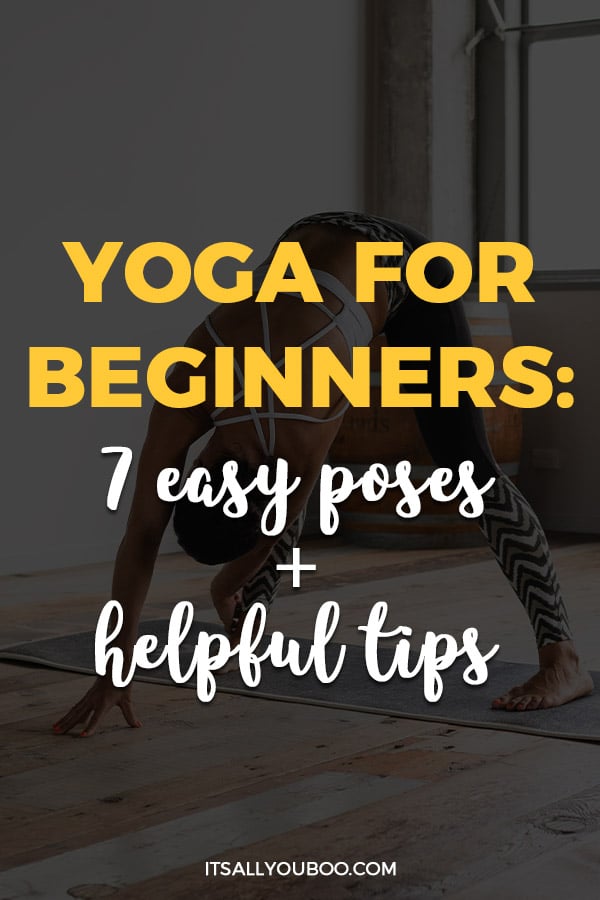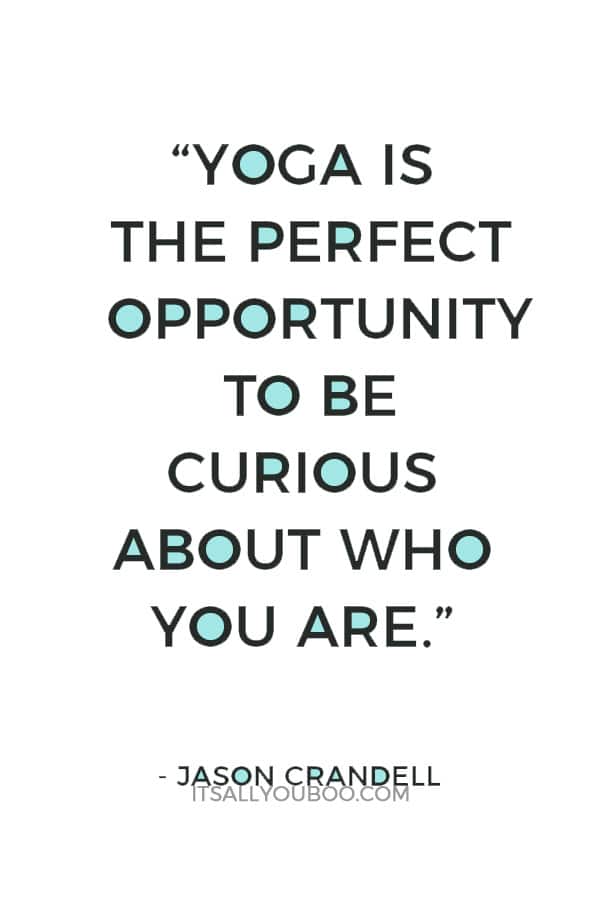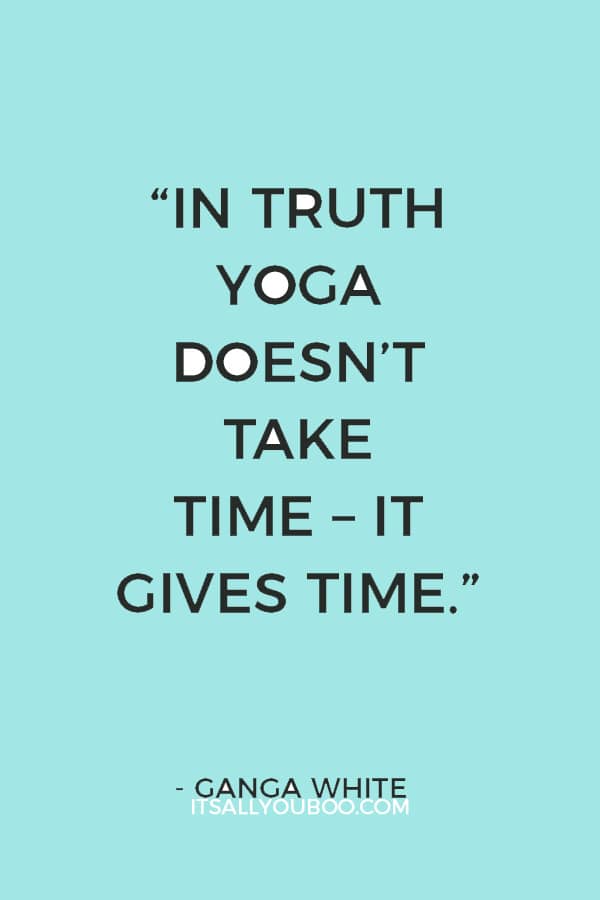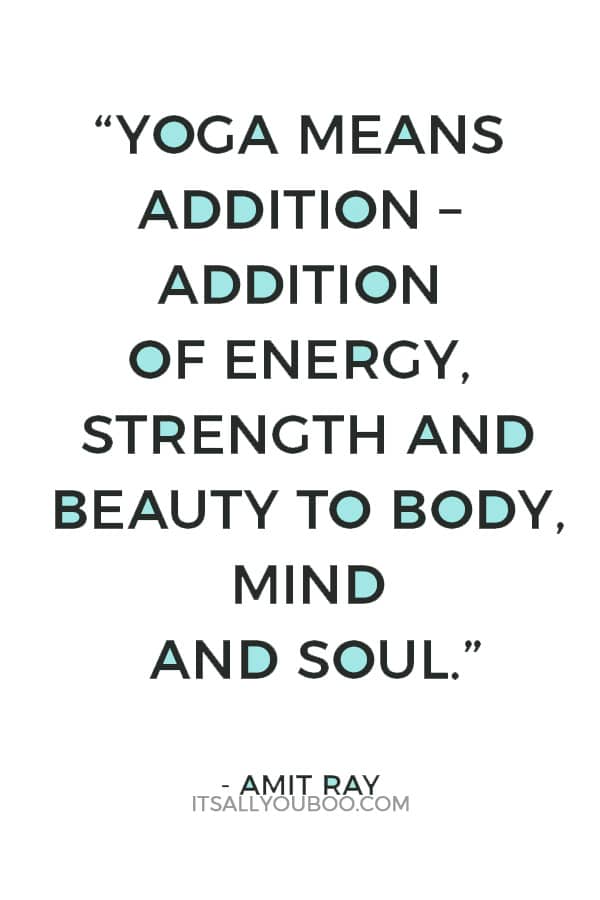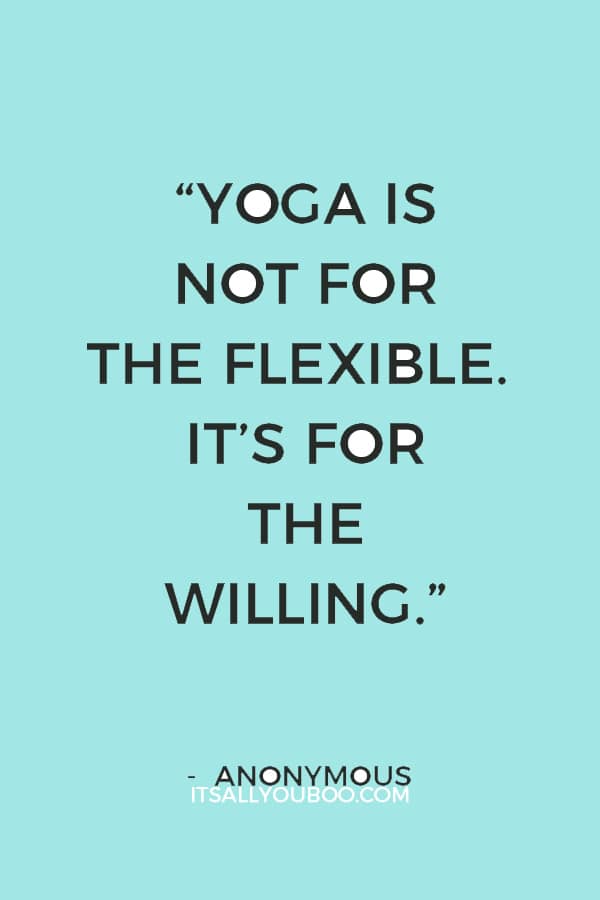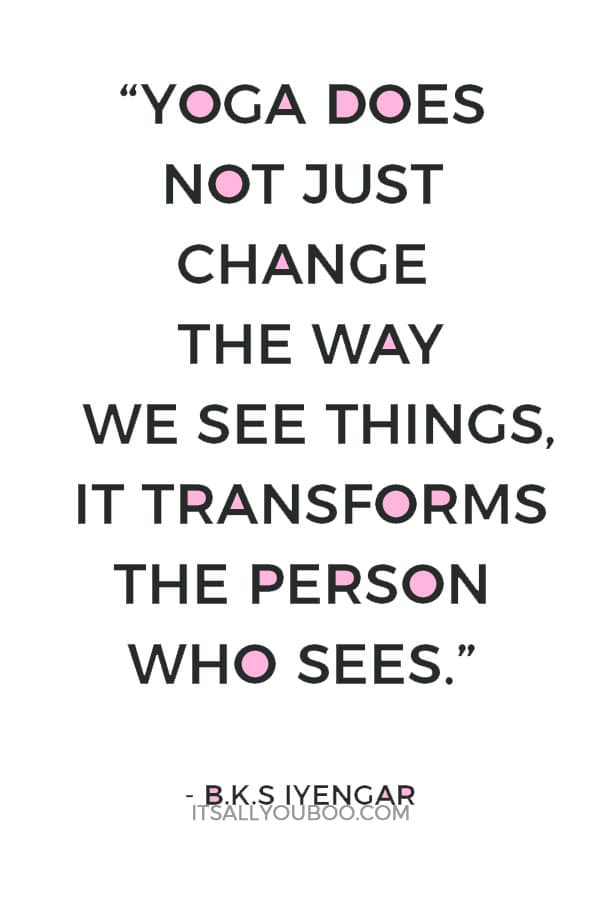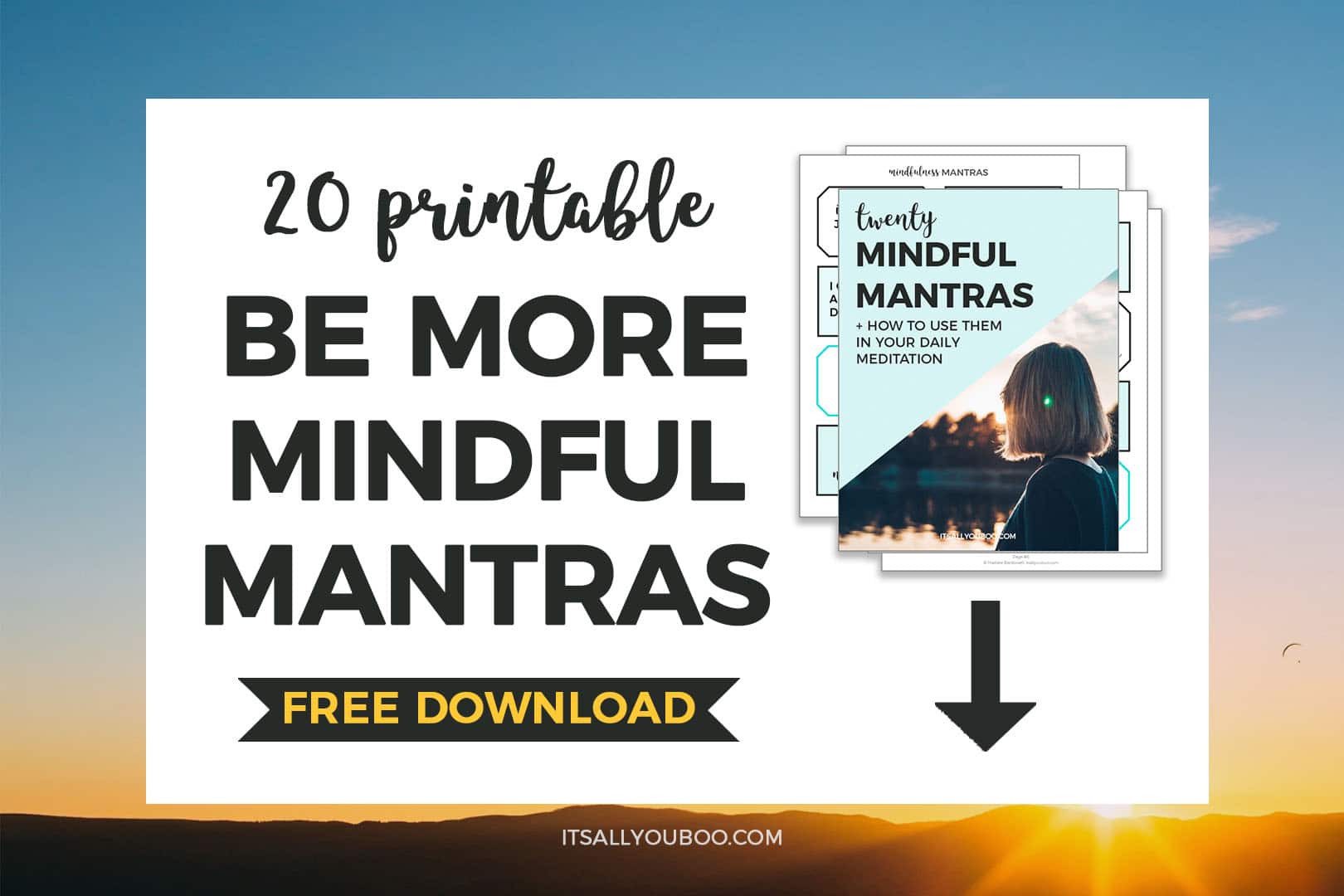Which yoga is best for beginners? What are the basic postures?
Everyone is talking endlessly about how amazing yoga is.
How it’s good for your mind and body, but how do you get started?
With so many seemingly complicated poses on Instagram, it’s easy to feel intimidated and afraid to start practicing yoga.
But, despite appearances, yoga is an incredibly accessible activity. That’s easy to practice no matter your physical strength level.
So, if you’re curious about yoga and are an absolute beginner, here’s your helpful guide into the world of yoga.
THIS POST MAY CONTAIN AFFILIATE LINKS.
IF YOU MAKE A PURCHASE FROM THESE LINKS, I MAY EARN A SMALL COMMISSION.
CLICK HERE FOR MY FULL DISCLAIMER STATEMENT.
What is Yoga?
Yoga is an ancient practice from Indian philosophy with more than 5000 years of history. The practice combines physical poses or asanas, breathing techniques or pranayama, and meditation.
The term came from the Sanskrit word Yuj which means “to unite” or “to yoke,” for its original purpose was to help to unite oneself with the higher beings or gods.
However, through the years, yoga became famous as a total workout that improves physical, mental, emotional, and spiritual health. Because of its long list of benefits, many studies and research were done to prove it. In general, yoga is a practice that promotes overall well-being.
Types of Yoga
With 5,000 years of history, there are many types of yoga.
- Vinyasa Yoga – This is one of the most popular types of yoga and is perfect for beginners. The poses in this yoga are usually incorporated with yogic breathing, as well as some form of meditation.
- Hatha Yoga – This type of yoga is usually used for strength training. It is slow-paced and can be practiced by people at any skill level.
- Kundalini Yoga – This type combines yoga and meditation. Some Kundalini yoga classes also incorporate chants. It focuses on mindfulness and can also be practiced by people at any skill level.
- Ashtanga Yoga – This type of yoga is better for advanced yogis. Ashtanga includes many challenging asanas that require core strength and flexibility.
👉🏽 RELATED POST: How to Meditate for Beginners
- Restorative Yoga – This type of yoga focuses on flexibility and is excellent for relieving stress. Yoga classes for this type of yoga often use different props to cradle the body and let prana flow in the body.
- Iyengar Yoga – This focuses heavily on using yoga props for alignment. It is another yoga that is good for beginners, as the use of accessories helps with flexibility. It is also suitable for yogis who are recovering from injury.
- Hot Power Yoga – This type of yoga is commonly practiced by yogis who would like to lose weight. A Hot Power Yoga class is conducted in a room with a high temperature.
- Yin Yoga – This yoga holds poses or asanas in a much longer time compared to other types. Because of this, it is perfect for stretching the body and improving flexibility and balance.
With so many types of yoga, several are perfect for beginners to practice. No experience is needed to practice yoga. Especially, when you think of all the benefits which are comparable Tai Chi and Qigong Meditation.
Benefits of Yoga
Yoga has a lot of benefits. This is one of the reasons why a lot of people became interested and started practicing it. Here are the most known benefits of practicing yoga:
- It improves flexibility and balance.
- It strengthens the muscles and builds core strength.
- It improves body posture.
- It promotes blood and oxygen flow.
- It improves sleep.
- It improves the sense of self.
👉🏽 RELATED POST: 9 Benefits of Practicing Tai Chi You Need to Know
- It helps ease pain.
- It promotes mindfulness.
- It boosts the immune system.
- It lowers blood pressure.
- It helps relieve anxiety and depression.
- It releases stress and muscle tension.
- It improves focus and attention.
As a beginner, there are so many benefits to practicing yoga.
Yoga Poses for Beginners
Asanas are the physical movements or poses in yoga that literally means “seat” in Sanskrit. Each yoga pose has a particular focus and purpose.
These yoga poses are categorized into nine types, namely: standing, seated, supine, prone, balancing, forward bends, backbends, twists, and inversions.
Some of the poses overlap into two or more categories, and these may be challenging for beginners, but here are 7 easy yoga poses that you can start with:
#1 Mountain Pose (Tadasana)
This is the most basic standing poses in yoga, many yoga sequences would begin from this position. It encourages yourself to be grounded with the connection to the earth that was established through your feet.
WATCH: Discover how understanding the essential pose of #Tadasana can set the stage for successful #yogasequencing. https://t.co/xWd5KU6bp1 pic.twitter.com/TZrn2F3Bs4
— Yoga Journal (@Yoga_Journal) September 26, 2017
How to do it:
- Stand with your legs and feet together.
- Firm your thigh muscles and push your toes on the ground or yoga mat.
- Stretch your spine and lengthen your neck by raising your head.
- Lift your chest and push your shoulder blades down.
- Hold the pose for 5 to 10 breaths.
#2. Staff Pose (Dandasana)
This pose is a primary seating position in yoga. In this asana, it is crucial to learn how to align your spine and your body like in the Mountain pose. This pose stretches the calves and hamstrings as well as the spine. It is also good for improving posture.
Refresh and enhance your knowledge of staff pose! #dandasana #yoga #pose https://t.co/kqWpfp37gu pic.twitter.com/M2sHNb1QAI
— Yoga International (@YI_Mag) January 7, 2016
How to do it:
- Sit with your legs stretched in front of you.
- Ground your body with your buttocks and thigh muscles.
- Align your shoulders to your hips and roll your shoulder blades back, away from your ears.
- Keep your palms flat on the floor and lengthen your spine.
- Breathe.
#3. Tree Pose (Vrksasana)
This is another beginner pose that strengthens your core and improves balance while enhancing clarity and focus.
#YogaWithST From enhancing your #flexibility to #increasing your stamina, #Vrksasana is the #Yoga pose of the day #workoutmotivation pic.twitter.com/zCvPshpTzw
— Speaking Tree (@speakingtree) March 22, 2017
How to do it:
- Start in a Mountain pose and keep your spine straight.
- Switch the weight of your body to your left foot.
- Bend your right knee upwards and place your right foot on your inner thigh.
- With your shoulders relaxed, lift your hands into a prayer position and look straight ahead.
- Maintain your balance and hold the pose for 5 to 10 breaths.
- Repeat on the other side.
#4. Downward Facing Dog Pose (Adho Mukha Svanasana)
This is another basic pose in yoga. It stretches the calves and hamstrings while strengthening the arms and legs. It is good for relieving back pain and promoting blood flow to your head with its mild inversion.
#DidYouKnow Adho Mukha Svanasana, a surya namaskar posture, strengthens the chest muscles and improves blood circulation. #IncredibleIndia pic.twitter.com/TGsqSCz4NY
— Incredible!ndia (@incredibleindia) May 26, 2019
How to do it:
- Start in a standing position with feet shoulder-width apart.
- Bend forward with your hands and knees on the floor or yoga mat.
- Straighten your legs as you lift your hips to the ceiling.
- Slightly bend your knees if there are discomforts in your hamstrings.
- Keep your hands on the floor and spread your fingers.
- Walk your hands forward if you need more length.
- Push your shoulder blades back and let your head hang.
- Hold the pose for 5 to 10 breaths.
- Release the pose by dropping back to your hands and knees.
#5. Child’s Pose (Balasana)
This pose is usually used for resting and taking a break. If you are in a yoga class and need to take a quick break, you can do this pose and re-establish your breathing. This pose also helps relieve fatigue immediately while gently stretching the hips, thighs, and back.
#FeaturedPose: Child’s Pose: #Balasana pic.twitter.com/SXP5YzK9ah
— Yoga on Gaia (@YogaOnGaia) November 25, 2014
How to do it:
- Start with your hands and knees on the yoga mat.
- The top of your feet should be facing the floor, and your big toes are touching.
- Spread your knees as fat as you can.
- Lower your belly and let it rest between your thighs.
- Rest your forehead on the floor and relax your body.
- Place your arms stretched in front of you with your palms down.
- Breathe in and out slowly and stay in this pose for as long as you like.
#6. Relaxed Pose (Sukhasana)
This pose is one of the most basic cross-legged seating positions in yoga. It also commonly used when meditating or when practicing pranayama. The easy pose opens the hip while stretching the knees and ankles.
Yoga Pose For Anxiety #AskADoctor #DailyHealthTips #yogaposes #Sukhasana pic.twitter.com/nE9FxrJBMc
— Daily Health Tips (@DailyHealthTips) February 15, 2018
How to do it:
- Sit with your legs crossed on the floor or yoga mat.
- Use padding for support if needed.
- Stretch your spine by pushing your crown towards the ceiling.
- Roll your shoulder blades down and open your chest.
- Let your hands rest on top of thighs.
- Breathe slowly.
#7. Corpse Pose (Savasana)
This yoga pose is usually used at the end of a yoga session as a transition to the rest of your day. It brings the body to a calm stillness. While in this position, try to center your focus and process what happened during your yoga practice.
Practice the Yoga #pose of the year #savasana #Relax with @AmityYoga #Saturdays #sthelens #StHelensHour @StHelensHour @appebite1 @Hayesbutchers1 @Room_Forty @TherapyPractice pic.twitter.com/JYzicubz9j
— wendy moran (@AmityYoga) January 8, 2018
- Lie on your back with your legs open.
- With your arms slightly away from your torso, rest it on the side of your body with palms open upwards.
- Close your eyes and relax your whole body.
- Breathe slowly and stay in this position for at least 5 minutes.
Helpful Tips for Yoga Beginners
Identify how you are going to learn yoga.
Are you enrolling at a yoga class, or will you learn through yoga videos? If you are new to yoga, then the best way to learn is through a yoga teacher that will provide you instructions in person. Yoga teachers are not only there to show you how the poses are done, but yoga teachers also teach you what is beyond the physical postures.
👉🏽 RELATED POST: Qigong Meditation For Beginners
Wear comfortable clothing.
In yoga, you will do different poses from different angles, and the last thing you’d want is to pull your clothes constantly. Your yoga attire does not need to be complex or designer, as well.
Choose a top that won’t fall down your head when you do an inverted pose or something that won’t slip up when you bend. Wear comfortable pants that stretch, many yoga poses will require you to stretch your legs.
Recognize your body’s strengths and limitations.
Don’t push yourself too hard. It is essential to know your limitations to prevent injury and accidents. Let your teacher know if you are challenged in a particular pose. They should be able to show you how to comfortably do the pose or help you modify it using yoga props and tools.
Be proud of your progress.
Everyone starts as a beginner. You don’t have to compare yourself with others, especially in a class setting. With other people around you, there would be someone more flexible and more balanced than you. And that’s okay because yoga is not a competition. In time, you will also improve. Celebrate these signs of progress, even the small ones!
👉🏽 RELATED POST: 12 Morning Routine Habits
Create a routine.
In order to fully experience the benefits of the practice of yoga, it must be done frequently, even for a few minutes. By doing it regularly, you’ll be able to feel familiar and more comfortable with the practice.
Relax and enjoy it!
One of the most known benefits of yoga is how it relaxes the mind and body. Take advantage of the time you spend practicing yoga to let go of the worries and unnecessary thoughts in your mind. Feel how the practice is changing you. Do the corpse pose as a final relaxation to officially end your session. Don’t skip this!
Use different breathing techniques, deepen your yoga practice.
In most cases, you’d only be instructed to breathe slowly and deeply when holding poses. However, since pranayama is a vital aspect of yoga practice, learning different breathing techniques can actually give you a different yoga experience.
Here are easy pranayama for beginners:
Square Breathing
Square breathing or box breathing is a slow, deep breath that heightens focus and performance. Aside from using this breathing technique during yoga poses, it is also useful when meditating.
How to do it:
- Exhale through mouth slowly to release all the oxygen from your lungs.
- Do this consciously as you count from one to four.
- Hold your breath and count from one to four.
- Inhale slowly to the count of four through your nose, filling your lungs with oxygen.
- Hold your breath and count from one to four.
- Repeat.
👉🏽 RELATED POST: 11 Ways to Stay Healthy with a Desk Job
Ujjayi Breath
This pranayama opens the lungs while promoting balance and calmness. This technique constricts the throat, resulting in a gentle sound that is similar to the waves of the ocean. Thus, its name, Ocean breath.
How to do it:
- Close your lips and breath slowly and deeply through your nose.
- Completely fill your lungs with air and pause for a few seconds.
- Constrict the back of the throat and slowly exhale the air through your nose.
- This will create a gentle sound.
- Repeat.
Kapalabhati
This breathing technique translates to Skull-shining breath. This pranayama is known for its purifying effect on the body by releasing toxins. It also promotes blood circulation and relieving negative emotions.
How to do it:
- Inhale through your nose, slowly filling your lungs and expanding your belly.
- After a quick pause, release the air by exhaling forcefully through your nose.
- Through the exhale, let your navel push towards your spine.
- Repeat.
Free Printable Mindfulness Mantras
Ready to start doing yoga? To take time daily to focus on your breathing and body? Start taking time for daily mindfulness mediation. Get your 20 FREE Printable Mindfulness Mantra cards.
Before you get started with your first yoga flow, let’s review all you’ve learned about yoga for beginners:
- What yoga is and isn’t,
- The types of yoga you can try,
- All the benefits of yoga practice,
- Best beginner yoga poses,
- Plus how to use breathing techniques.
People all around the world are getting into yoga because of the many benefits that it offers. Yoga is a great way to reconnect with yourself and your spirit. With continuous practice, you will see how your life and well-being change.
Want to start yoga but not sure how to start? Here's your guide to yoga for beginners, with 7 simple yoga poses, routines and helpful tips. Anyone can do yoga! #Yoga #YogaPractice #YogaPose #Asana #Namaste
Are you practicing yoga for beginners?

More About Guest Contributor
Kelly is a 200-hour hatha yoga teacher and loves yoga, meditation, and mindfulness.
Last Updated on August 26, 2024
